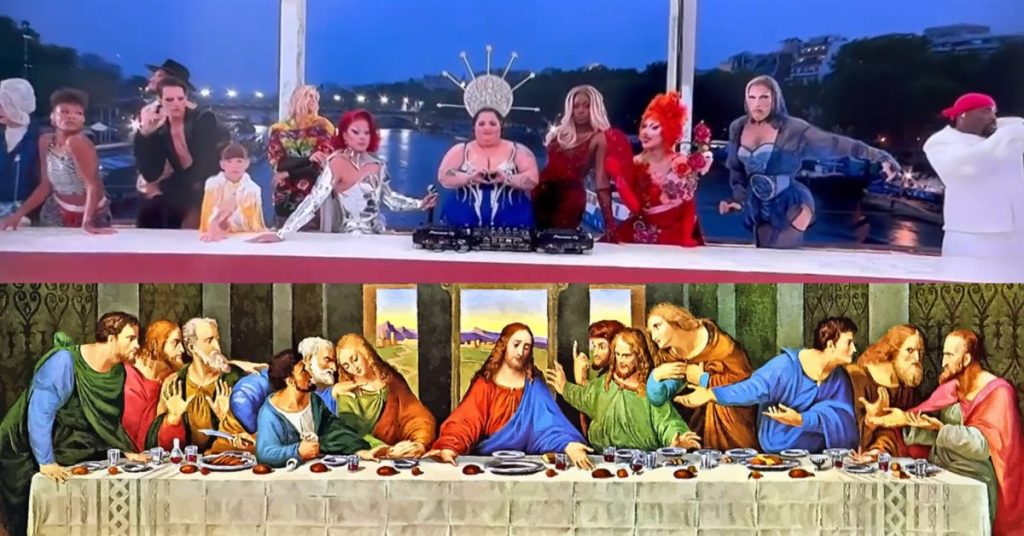| Free Speech is Under Siege in Starmer’s UKThese Orwellian nightmarish attacks on free speech and liberty are being planned for the entire world… The UK is currently experiencing a massive attack on free speech, spearheaded by new Prime Minister Keir Starmer, who is encouraging police to use the full force of controversial British laws to crack down on social media posts.The push for more online censorship has spanned many years, and different governments in the UK have gained new momentum with the recent protests and riots.Emboldened by the crisis, officials seem to be using it to step up the already existing, multi-year effort to get social media companies to “cooperate” with the authorities.It has now emerged that the government in London has started flagging content it deems to be “misinformation” – but also something referred to as “concerning content.”X is among those who have been asked to remove posts which British officials consider to threaten the country’s national security; and while reports say Google, Meta, and TikTok are complying with these demands, X is said to be resisting them.The accusations that social sites are “providing a platform for hate” while allegedly unaccountable for that is coming from cabinet members and MPs alike.Science, Innovation, and Technology Secretary Peter Kyle has revealed that he and Home Secretary Yvette Cooper are working to get content they consider “harmful” removed from the internet .Recent actions in the UK regarding the apprehension of individuals for disseminating “incorrect information” highlight a concerning trend that threatens the very core of free speech—a foundational pillar of Western democracies.These developments suggest an alarming escalation in government and law enforcement involvement in regulating online speech, which traditionally enjoys broad protections under democratic norms.The use of existing laws, such as the Public Order Act 1986, to arrest individuals for their online speech is deeply troubling to civil liberties groups.While maintaining public order is a legitimate concern of the state, the broad application of these laws and combining accusations of “stirring racial hatred” with instances of alleged “misinformation” is supercharging an attack on free speech.The introduction of the UK’s most recent censorship law, the “Online Safety Act” further complicates this, with supporters of censorship like Kyle, suggesting that the already-controversial act doesn’t go far enough.As far as Kyle is concerned, he is looking for ways for the government to be able to control online speech to an even greater extent. The primary catalyst appears to be the recent riots and social unrest following tragic incidents, like the knife attack in Southport.Axel Rudakubana is an 18-year-old who has been charged with the murders of three young girls during a knife attack at a Taylor Swift-themed dance class in Southport, England. The victims were Bebe King, aged six, Elsie Dot Stancombe, aged seven, and Alice Dasilva Aguiar, aged nine. In addition to the murder charges, Rudakubana faces charges of attempted murder against a yoga class instructor, a businessman, and eight children, as well as possession of a kitchen knife with a curved blade.Rudakubana was born in Cardiff to Rwandan parents and lived in Banks, Lancashire, England. UK police are alleging that early posts stating that Rudakubana was a Muslim have fueled online hatred and prosecutors are using claims of “misinformation.”Yet while those in the US may be familiar with false allegations being a civil matter, as the First Amendment largely protects citizens from criminal charges for such incidents; in the UK, where free speech is struggling, citizens don’t have the same protections under the current law .In Cheshire, police have taken anti-lockdown campaigner Bernadette “Bernie” Spofforth into custody for allegedly spreading misleading information on social media about a suspect involved in the Southport killings. According to Cheshire police, she faces charges of inciting racial hatred and disseminating false information. Police allege that her actions are part of a broader issue of online misinformation sparking violence nationwide.The controversy centers on a social media post attributed to Spofforth, in which she identified “Ali Al-Shakati” as the Southport suspect, describing him as an “asylum seeker who came to the UK by boat last year” and claiming he was under surveillance by MI6. The post ominously noted, “If this is true, then all hell is about the break loose.”Chief Superintendent Alison Ross commented on the situation, saying, “We have all seen the violent disorder that has taken place across the UK over the past week, much of which has been fueled by malicious and inaccurate communications online. It’s a stark reminder of the dangers of posting information on social media platforms without checking the accuracy. It also acts as a warning that we are all accountable for our actions, whether that be online or in person.”Even the much-criticized Online Safety Act, a sweeping censorship law, is now not enough as far as Kyle is concerned, as he is looking for ways for the government to be able to control online speech to an even greater extent. The UK’s new Prime Minister Keir Starmer has announced a forthcoming review of the Online Safety Act. During his visit to a police station on Friday, just before two individuals were imprisoned for using social media to incite attacks on asylum seeker accommodations, Starmer emphasized that social media must not be a “law-free zone.”London Mayor Sadiq Khan, who criticized the legislation as inadequate and in urgent need of revision, also suggested it doesn’t go far enough and more censorship power is needed.“I do agree that we’re going to have to look more broadly at social media after this disorder,” Starmer said. “But the focus at the moment has to be on dealing with the disorder and making sure that our communities are safe and secure.”Starmer further commented on what he believes should be the responsibilities of social media executives, telling them to prioritize community safety. He affirmed, “The first thing I’d say is, this is not a law-free zone. And I think that’s clear from the prosecutions and sentencing. Today we’re due sentencing for online behavior.”And, the government has brought in the National Security Online Information Team (NSOIT) to monitor online activity “discussing the deaths of the three children killed in Southport and the rioting,” as Kyle put it.NSOIT, previously known as the Counter Disinformation Unit, is infamous for its censorship “handiwork” during the Covid pandemic when it flagged accurate posts from politicians and journalists simply for being critical of the government’s policy.Conservative MP David Davis previously called for the unit to be disbanded, but now, he doesn’t mind “deploying” it to once again police speech: “It’s perfectly legitimate for the state to monitor things that might incite violence,” said Davis.Big Brother Watch Director Silkie Carlo writes that Kyle is “reviving Whitehall’s disgraced Counter Disinformation Unit” and warns that it would be a “grave mistake” to further undermine free speech as it would simply “inflame tensions, sow distrust and undermine democracy.”Carlo also warns about “the very neat response of online censorship that benefits elites who have never really trusted us with free and open access to information online.” Meanwhile, Director of Public Prosecutions for England and Wales Stephen Parkinson has told citizens not to reshare posts that are “insulting or abusive (…) intended to or likely to start racial hatred.”Some reports interpret this to mean citizens could be prosecuted even if they are sharing that content as a warning to others.The UK government issued a stern warning to its citizens regarding the risks of sharing potentially offensive content online, particularly in the context of the recent riots. Those who incite “hatred” could face imprisonment, as stated in a post by the Crown Prosecution Service (CPS) on the social media platform X.“Think before you post!” the CPS advised.But it’s not just UK citizens that officials are threatening.Sir Mark Rowley, the head of the Metropolitan Police, said that what he terms “keyboard warriors” could face terrorism charges for their online behavior that incites violence, even if they are based overseas.“And whether you’re in this country committing crimes on the streets or committing crimes from further afield online, we will come after you,” highlighting the extended reach of law enforcement to those instigating unrest from afar,” Rowley said to Sky News.“Being a keyboard warrior does not make you safe from the law, you can be guilty of offenses of incitement, of stirring up racial hatred, there are numerous terrorist offenses regarding the publishing of material, and all of those offenses are in play if people are provoking hatred and violence on the streets and we will come after those individuals just as we will physically confront on the streets the thugs and the yobs who are causing the problems for communities.”Keir Starmer has asserted that criticisms of police and accusations of a two-tier policing system in the UK are themselves dangerous. This could have troubling implications for free speech.X owner Elon Musk, who is facing censorship calls from Starmer, called out Starmer’s hypocrisy, highlighting how the Prime Minister himself criticized police back in 2021. “What a hypocrite,” Musk posted.By framing such critiques as not only unfounded but also hazardous, there’s a risk that public discourse may be stifled.This stance might discourage individuals from voicing legitimate concerns about policing, out of fear that their criticisms could be seen as harmful or destabilizing.It suggests a scenario where the public might hesitate to hold law enforcement accountable, which is a crucial aspect of democratic oversight. The suggestion that voicing concerns about police practices can endanger officers potentially shifts the focus from the need for transparency and accountability in policing to a narrative that prioritizes the suppression of dissent to protect police image and safety. This could undermine the principle of free expression, which includes the right to critique and question government institutions. |







